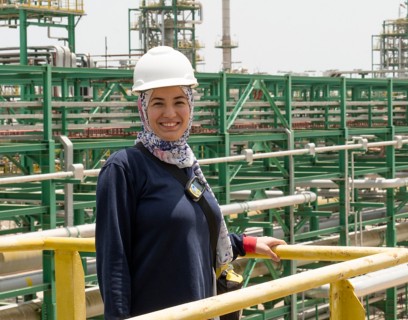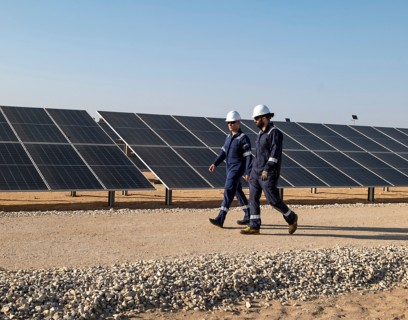Publications
Consult the company’s original documents. Apply the filter to select the topic of your area of interest, then select the year of publication.
Country by Country
Plenitude - Market presentation (October 2025)
Plenitude - 3Q presentation (October 2025)
Plenitude – Market presentation
Plenitude – 1H presentation
EniNext Technology Showcase - Exploration section
EniNext Technology Showcase - Enilive section
EniNext Technology Showcase – CFS section
Report on the 2025 Remuneration Policy and remuneration paid 2024
Versalis – Market presentation
March 2025
Corporate Governance Report 2024
Change in share capital
Plenitude – Market presentation
February 2025
Country by Country
Annual Report on Form 20F 2024
Hard copies of the audited financial statements are also available to shareholders free of charge upon request by email to Investor.relations@eni.com
Plenitude FY 2024 Presentation (February 2025)
27 February 2025
Versalis - Market presentation (December 2024)
December 2024
Plenitude – Market presentation (October 2024)
October 2024
Plenitude 1H Presentation (July 2024)
26 July 2024
Enilive – Market presentation (May 2024)
May 2024
Report on the 2024 Remuneration Policy and Remuneration paid 2023
Change in share capital
Eni Methane Report 2024
Plenitude - Market Presentation - Dec23
December 2023
Country by Country
Low Carbon Energies Technology Field Trip
14 September 2023
Corporate Governance Report 2023
Report on remuneration policy and remuneration paid
Summary annual report - Eni in 2022
Corporate Governance Report 2022
Report on remuneration policy and remuneration paid - 2022
Country by Country
Summary annual report - Eni in 2021
Eni Retail + Renewables: a unique proposition
September 2021
Eni Bio-Refining
22 June 2021
Corporate Governance Report 2021
Report on remuneration policy and remuneration paid - 2021
Country by Country
Summary annual report - Eni in 2020
Corporate Governance Report 2020
Report on remuneration policy and remuneration paid
Slavery and Human Trafficking Statement 2020
Country by Country report 2019
Corporate Governance Report 2019
Remuneration Report 2019
Annual Report on Form 20F 2019
Corporate Governance Report 2018
Slavery and human Trafficking Statement 2019 - ETS
Country by Country
Annual Report On Form 20 F 2018
Managers’ Transactions (Italian version)
Corporate Governance Report 2017
Remuneration report 2018
Country by Country
Fixed Income Investor Update
27 November 2017
Annual Report On Form 20-F 2017
Investor Day 2017
15 March 2017
Brochure
2016 Investor Day New York
13 December 2016
Statement Modern Slavery Act 2016
Eni in Australia
Eni's CDP Submission
Energy, Society and Sustainability in Mozambique
Goliat Field Trip 2015
18-19 September 2015
Libya: energy, society, sustainability
Highlighted documents
Regulated Information
For the transmission of the regulated information Eni uses the system authorised by Consob called "1Info-Sdir", managed by Computershare S.p.A., with registered office in Milan at 19, Via Lorenzo Mascheroni. For the storage and filing of regulated information, Eni has adhered to the centralized storage device authorised by Consob called "1Info", which can be consulted on the website www.1info.it, and managed by Computershare S.p.A., with registered office in Milan at 19, Via Lorenzo Mascheroni.
Sustainability Statement
2024
Eni’s Sustainability Statement, drawn up in accordance with the Legislative Decree no. 125/2024, is published within the Annual Report, in line with the company’s process of integrating non-financial with financial information, as of 2010. For the Sustainability Statement see pages 132-267 of the 2024 Annual Report in the “Annual and Quarterly Reports” section.
Eni’s Consolidated disclosure of non-financial information
2023
Eni’s Consolidated disclosure of non-financial information (NFI) drawn up in accordance with the Legislative Decree no. 254/2016 is published within the Annual Report, in line with the company’s process of integrating non-financial with financial information, as of 2010. For the NFI 2023 see pages 140-225 of the 2023 Annual Report in the “Annual and Quarterly Reports” section.
Eni’s Consolidated disclosure of non-financial information
2022
Eni’s Consolidated disclosure of non-financial information (NFI) composed under Legislative Decree no. 254/2016 is published within its Annual Report, in line with the company’s process of integrating non-financial with financial information, as of 2010. For the NFI 2022 see pages 152-231 of the 2022 Annual Report in the “Annual and Quarterly Reports” section.
Eni’s Consolidated disclosure of non-financial information
2021
Eni’s Consolidated disclosure of non-financial information (NFI) composed under Legislative Decree no. 254/2016 is published within its Annual Report, in line with the company’s process of integrating non-financial with financial information, as of 2010. For the NFI 2021 see pages 148-200 of the 2021 Annual Report in the “Annual and Quarterly Reports” section.
Eni’s Consolidated disclosure of non-financial information
2020
Eni’s Consolidated disclosure of non-financial information (NFI) composed under Legislative Decree no. 254/2016 is published within its Annual Report, in line with the company’s process of integrating non-financial with financial information, as of 2010. For the NFI 2020, see pages 136-178 of the 2020 Annual Report in the “Annual and Quarterly Reports” section.
Eni’s Consolidated disclosure of non-financial information
2019
Eni’s Consolidated disclosure of non-financial information (NFI) composed under Legislative Decree no. 254/2016 is published within its Annual Report, in line with the company’s process of integrating non-financial with financial information, as of 2010. For the NFI 2019, see pages 106-139 of the 2019 Annual Report in the “Annual and Quarterly Reports” section.
Eni’s Consolidated disclosure of non-financial information
2018
Eni’s Consolidated disclosure of non-financial information (NFI) composed under Legislative Decree no. 254/2016 is published within its Annual Report, in line with the company’s process of integrating non-financial with financial information, as of 2010. For the NFI 2018, see pages 104-133 of the 2018 Annual Report in the “Annual and Quarterly Reports” section.
Eni’s Consolidated disclosure of non-financial information
>2017
Eni’s Consolidated disclosure of non-financial information (NFI) composed under Legislative Decree no. 254/2016 is published within its Annual Report, in line with the company’s process of integrating non-financial with financial information, as of 2010. For the NFI 2017, see pages 91-113 of the 2017 Integrated Annual Report in the “Annual and Quarterly Reports” section.
Don't miss a single update
Sign up to our newsletter and activate your e-mail alert to discover the insights from the world of Eni


















